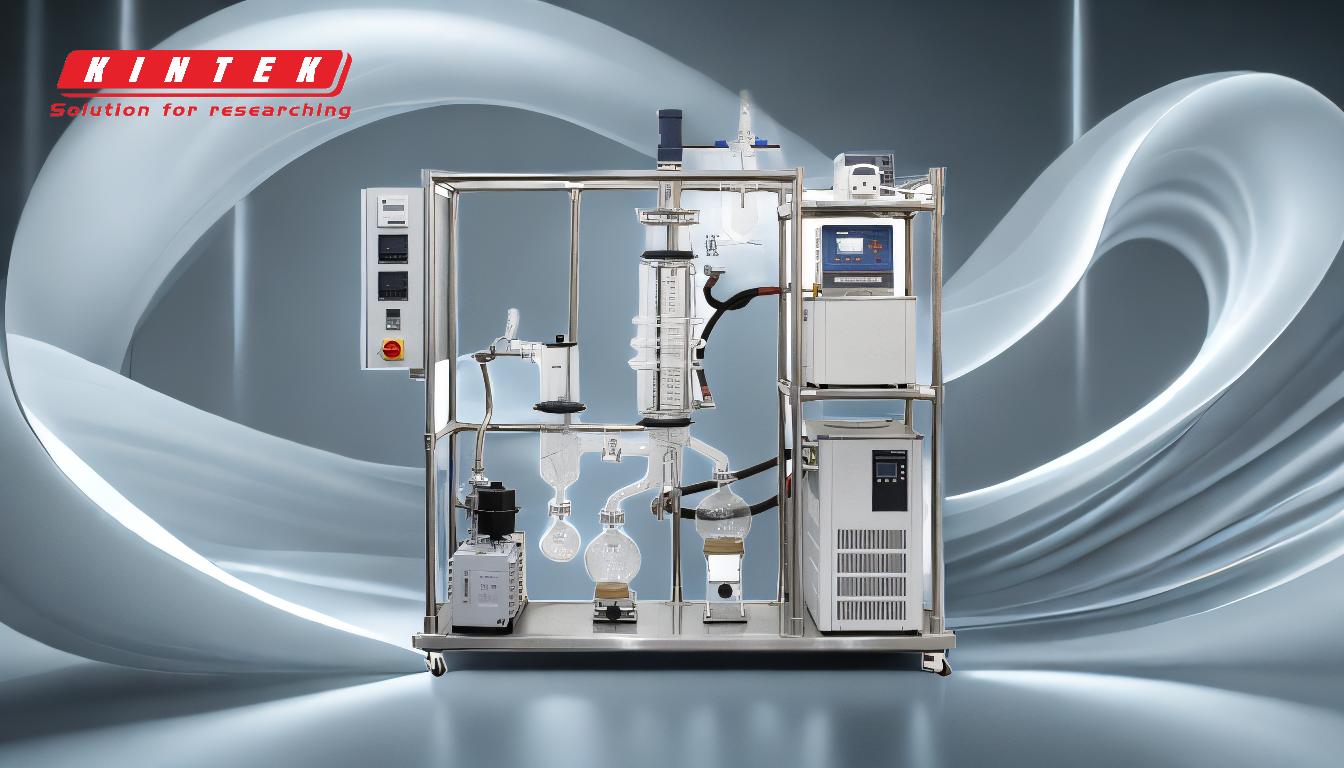Simple distillation is a fundamental technique used to separate liquids based on their differing boiling points. The process involves heating a liquid mixture to its boiling point, allowing the component with the lower boiling point to vaporize first. The vapor is then cooled and condensed back into a liquid, which is collected separately. This method is effective for separating compounds with significantly different boiling points (typically a difference of at least 70°C). The process is repeated until all components are separated. Proper setup, including secure connections and controlled heating, is crucial for successful distillation. Below is a detailed step-by-step explanation of how simple distillation works.
Key Points Explained:

-
Preparation of the Distillation Apparatus:
- Secure Connections: Ensure all components of the distillation setup, such as the boiling flask, condenser, and collection flask, are securely connected to prevent leaks.
- Insulation: If using insulation, wrap the boiling flask and the bottom quarter of the distillation head, leaving the Vigreux column visible for observation.
- Valve Adjustment: Close the valve on the manifold to prepare for controlled airflow during the process.
-
Heating the Mixture:
- Initial Heating: Begin heating the mixture by setting the heat source to around 60°C. If using an analog heating mantle, set the knob to the middle position.
- Stirring: Start stirring at approximately 200 RPM to ensure even heating and prevent localized overheating.
- Temperature Adjustment: If no reaction occurs, slightly increase the temperature by adjusting the heating knob past the halfway position until vaporization begins.
-
Vaporization and Condensation:
- Boiling Point Reached: As the mixture heats, the component with the lower boiling point will start to vaporize first.
- Vapor Collection: The vapor travels through the distillation head and into the condenser, where it is cooled and condensed back into a liquid.
- Collection: The condensed liquid (distillate) is collected in a separate flask.
-
Temperature Control and Separation:
- Temperature Increase: As the lower boiling point component is removed, the temperature of the mixture will rise to match the boiling point of the next component.
- Repeated Process: Continue the process, adjusting the temperature as needed, until all components are separated based on their boiling points.
-
Post-Distillation Steps:
- Stopping the Process: Once the distillate stops flowing and the reaction subsides, stop the heat and stirring.
- Vacuum Pump: If a vacuum pump was used, stop it and open the valve to allow atmospheric pressure back into the system.
- Final Checks: Ensure all components are safely turned off and the system is depressurized before disassembling.
-
Considerations for Effective Distillation:
- Boiling Point Difference: Ensure the boiling points of the components differ by at least 70°C for effective separation.
- Purity Improvement: Simple distillation provides moderate purity improvement, as the vapor is generally more pure than the boiling liquid.
- Safety: Always monitor the process closely to prevent overheating or spills, and ensure proper ventilation to avoid inhaling vapors.
By following these steps, simple distillation can effectively separate liquids with significantly different boiling points, providing a straightforward method for purification or separation in laboratory and industrial settings.
Summary Table:
| Step | Key Actions |
|---|---|
| Preparation | Secure connections, insulate boiling flask, close manifold valve. |
| Heating the Mixture | Set heat source to 60°C, stir at 200 RPM, adjust temperature for vaporization. |
| Vaporization & Condensation | Lower boiling point component vaporizes, condenses, and is collected. |
| Temperature Control | Increase temperature to separate higher boiling point components. |
| Post-Distillation | Stop heat and stirring, stop vacuum pump, and depressurize the system. |
| Considerations | Ensure 70°C boiling point difference, monitor safety, and improve purity. |
Need help setting up your distillation process? Contact our experts today for guidance and support!









